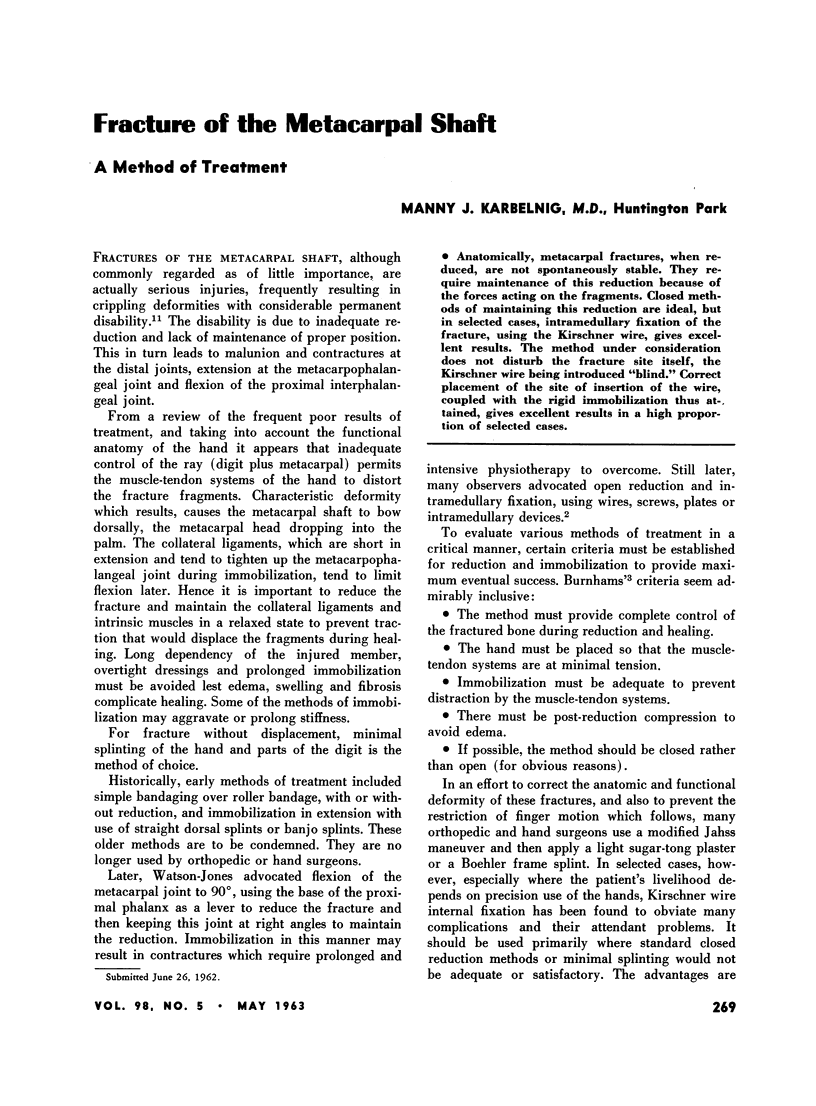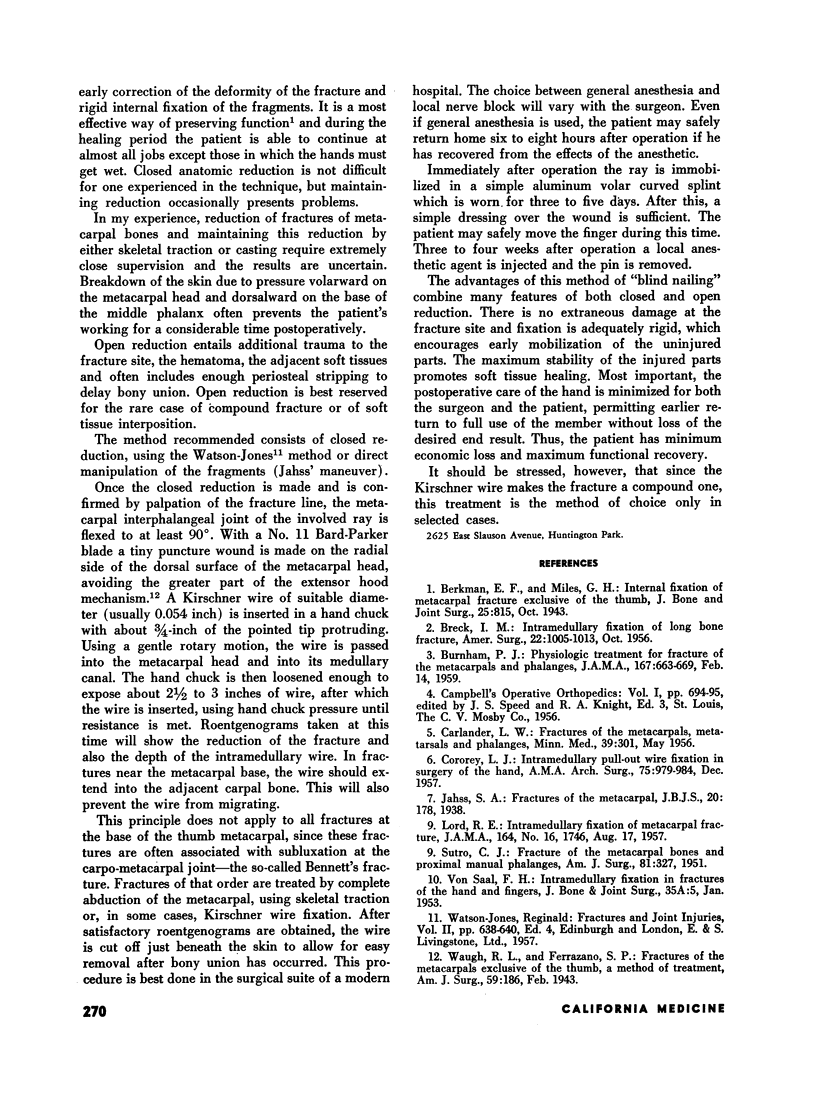Abstract
Anatomically, metacarpal fractures, when reduced, are not spontaneously stable. They require maintenance of this reduction because of the forces acting on the fragments. Closed methods of maintaining this reduction are ideal, but in selected cases, intramedullary fixation of the fracture, using the Kirschner wire, gives excellent results. The method under consideration does not disturb the fracture site itself, the Kirschner wire being introduced “blind.” Correct placement of the site of insertion of the wire, coupled with the rigid immobilization thus attained, gives excellent results in a high proportion of selected cases.
Full text
PDF

Selected References
These references are in PubMed. This may not be the complete list of references from this article.
- BRECK L. W. Intramedullary fixation of long bone fractures. Am Surg. 1956 Oct;22(10):1005–1013. [PubMed] [Google Scholar]
- BURNHAM P. J. Physiological treatment for fractures of the metacarpals and phalanges. J Am Med Assoc. 1959 Feb 14;169(7):663–666. doi: 10.1001/jama.1959.03000240001001. [DOI] [PubMed] [Google Scholar]
- CARLANDER L. W. Fractures of the metacarpals, metatarsals and phalanges. Minn Med. 1956 May;39(5):301–302. [PubMed] [Google Scholar]
- LORD R. E. Intramedullary fixation of metacarpal fractures. J Am Med Assoc. 1957 Aug 17;164(16):1746–1749. doi: 10.1001/jama.1957.02980160018005. [DOI] [PubMed] [Google Scholar]
- SUTRO C. J. Fracture of metacarpal bones and proximal manual phalanges; treatment with emphasis on the prevention of rotational deformities. Am J Surg. 1951 Mar;81(3):327–332. doi: 10.1016/0002-9610(51)90236-x. [DOI] [PubMed] [Google Scholar]
- VOM SAAL F. H. Intramedullary fixation in fractures of the hand and fingers. J Bone Joint Surg Am. 1953 Jan;35-A(1):5–passim. [PubMed] [Google Scholar]


